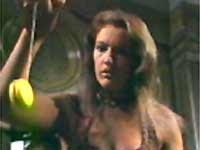What goes down must come up - after a few tricks
A playground favourite for millions of school children the world over, the yoyo is actually, according to some historians, one of the oldest toys around.
Museums hold ample examples of terra cotta yoyos from ancient Greece, and wall-paintings in Egyptian temples are said to depict playthings recognisable to the modern eye.
While there is little evidence to support the theory that yoyos were once used as weapons, both combatants at Waterloo, Napoleon and the Duke of Wellington, were said to be aficionados.
The bobbing bauble
The name 'yoyo' was first brought to the attention of western society in a 1916 Scientific American article on toys from the Philippines.
Pedro Flores, a Filipino who emigrated to the United States, is widely credited with popularising the modern yoyo after establishing a factory in Santa Barbara, California.
The first yoyo craze swept across the US in the 1930s when Flores� company, now owned by the entrepreneur Donald F. Duncan, ran promotions with the Hearst newspaper empire. London hosted the first World Yoyo Competition in 1932, won by 13-year old Harvey Lowe.
Crazy for you
Major advances in yoyo technology followed after 1955 when Duncan introduced the first plastic yoyos and the Butterfly shaped yo-yo, which is easier to land on the string for fancy tricks.
Television advertising pushed yoyo mania to new heights during the early 1960s. A costly dispute over the yoyo trademark drove the two biggest manufacturers into bankruptcy in 1965, but this event only served to widen the range of suppliers.
 The Seventies and Eighties were rather lean times for the yoyo as children were confronted with an unprecedented choice of entertainment options. However, there is a happy ending: 1995 was reportedly the most successful year in yoyo history when a new Duncan advertising campaign cleverly extolled the virtues of this age-old pastime.
The Seventies and Eighties were rather lean times for the yoyo as children were confronted with an unprecedented choice of entertainment options. However, there is a happy ending: 1995 was reportedly the most successful year in yoyo history when a new Duncan advertising campaign cleverly extolled the virtues of this age-old pastime.
As each successive generation of school children adds the yoyo to its bag of playground tricks, this simple plastic-and-string bauble has held its place as one of the most enduring toys of the twentieth century.
